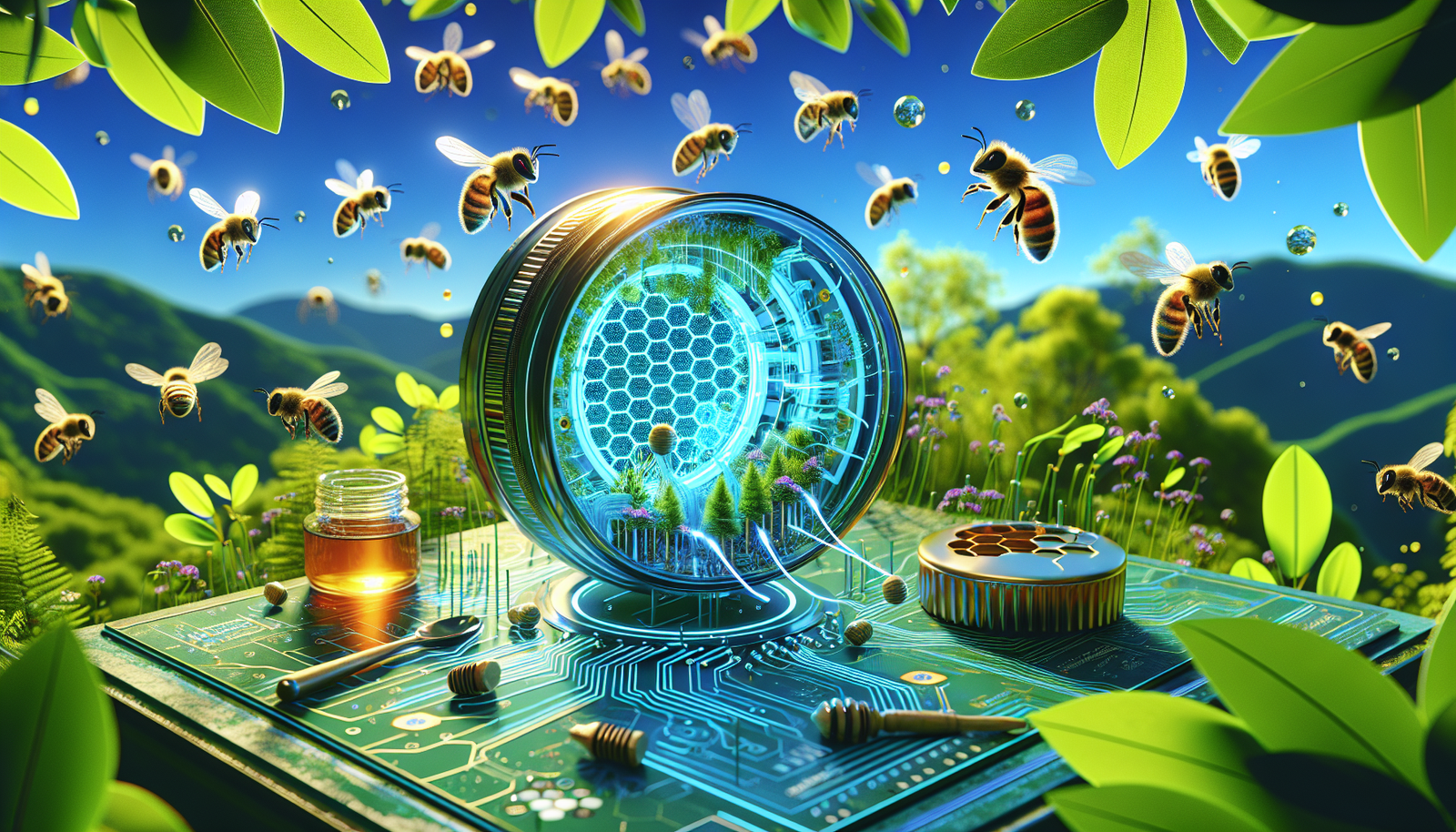Innovative and eco-friendly, a recyclable artificial vision system is on the technological horizon. This exceptional device uses honey as an electrolyte, opening new avenues for sustainability. Designed to mimic the operation of human perception, it frees itself from the limitations of conventional systems.
Renowned engineers and researchers collaborate to design such a device, redefining the very idea of technological innovation. This revolutionary optical system promises to transform our relationship with electronic waste while preserving our natural resources. Advances in this field offer an alternative to polluting materials, combining performance with environmental responsibility.
An Eco-Friendly Artificial Vision System
Researchers have recently developed a revolutionary artificial vision system inspired by the functioning of the human brain. This device, named EGOFET, uses honey as an electrolyte and falls within an approach aimed at reducing electronic waste. The research team, consisting of engineers from the University of Glasgow, São Paulo State University (UNESP), and Hong Kong Metropolitan University, has designed a device with organic and biodegradable components.
Innovative Features
The EGOFET performs three essential functions in a single element: light detection, information processing, and data storage. This system thus simulates human cognitive processes by efficiently combining these tasks. Its ability to memorize information, even when powered off, represents a major advancement in this field.
Energy Efficiency
The energy consumption of the EGOFET is extremely low, requiring only 2.4 picojoules of energy per activation event. This performance makes it far more efficient compared to systems based on traditional CMOS sensors, which typically require significantly higher computational and energy resources, sometimes millions of times greater.
Environmental Impacts
This type of artificial vision system could provide a sustainable solution to the challenges associated with electronic waste. The glass and gold components of the device are likely to be recyclable after their lifecycle. The organic components, on the other hand, degrade naturally, helping to reduce the ecological footprint.
Futuristic Applications
The potential applications of this system range from autonomous vehicles to intelligent security systems. The rapid processing of visual information will facilitate significant progress in these areas. Further research aims to transfer this technology into networks of multiple devices to amplify performance.
Ethics and Sustainability
The development of the EGOFET highlights the scientific commitment to sustainable and ethical innovation. By integrating environmentally friendly materials, researchers hope to revolutionize not only artificial vision but also related fields such as image processing and bio-inspired electronics.
Study Conclusion
The results of this research, titled “Sustainable and Tunable Synaptic Electrolyte‐Gated Organic Field‐Effect Transistors (EGOFETs) for Light Adaptive Visual Perceptive Systems”, have been published in the journal Advanced Functional Materials. The use of honey, as a fundamental component, illustrates how natural resources can transform the current technological landscape, combining innovation and sustainability.
FAQ about the recyclable artificial vision system using honey as an electrolyte
What is a recyclable artificial vision system using honey as an electrolyte?
It is a system that mimics the functions of human vision, using organic and biodegradable components, including honey, to process and memorize visual information while being recyclable and energy-efficient.
How does honey function as an electrolyte in this system?
Honey serves as an electrolyte by allowing the flow of electricity within the device, which helps generate electrical signals in response to light, thereby facilitating the detection and memorization of images.
What is the main advantage of this system compared to traditional vision systems?
The main advantage lies in its ultra-low energy consumption and its use of sustainable materials, which allows for a reduction in environmental impact compared to traditional CMOS sensors that require significant energy resources.
How does the system retain information even when powered off?
This system has a property called non-volatility, meaning it can store visual information even when not powered, thanks to its integrated organic design that preserves the state of memory.
What is the applicability of this system in the real world?
This system could be used in various fields, including autonomous vehicles, intelligent security systems, and other applications requiring rapid and efficient visual information processing.
What types of electronic waste does this system help reduce?
By utilizing recyclable and biodegradable materials, this system contributes to the reduction of electronic waste associated with traditional electronic devices, such as silicon sensors and transistors.
What challenges are associated with the implementation of this type of technology?
Challenges include the need for further research to optimize performance, the durability of organic materials, and the scaling up of production for such systems for commercial applications.
Does the honey used in the system have special properties?
Honey possesses unique properties, such as its ability to act as a good conductor of electricity while being non-toxic, making it ideal for use in sustainable electronic systems.
What is the significance of “memristor” in the context of this system?
A memristor is a component that combines data processing and storage functions, which is essential in the artificial vision system for enabling increased efficiency and reduced energy needs.
Is this system really recyclable after use?
Yes, the glass and gold components can be recycled, while the organic elements, such as honey, are biodegradable and can decompose naturally, thereby minimizing environmental impact at the end of their lifecycle.






